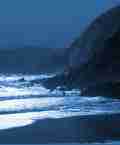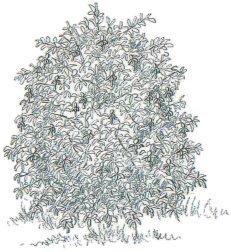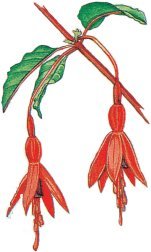 |
Search the site:


Fuchsia
Fuchsia forms a bushy and spreading shrub up to 3 metres (10 feet) tall, but never a tree. Its bark is a light yellowish brown and peeling. Its leaves are opposite, oval and toothed, about 2.5 to 6 cm long, with short stalks. Its distinctive drooping flowers are produced singly along the stems and consist of four bright red sepals arising from the end of a swollen tube and four deep purple petals from which protrude the eight long stamens. In autumn the fruits are black, fleshy, almost spherical berries 1.5 to 2 cm long.
The commonest variety found is var. riccartonii, which originally arose as a garden variety. It has fat spherical buds which pop when squeezed. A rarer variety, magellanica proper, has longer and thinner buds. Fuchsia does not tolerate too much frost and so is rarest in the midlands, east and north.
Information extracted from the Appletree Press title |
[ Back to Top ]
All Material © 1999-2008 Irelandseye.com and contributors


